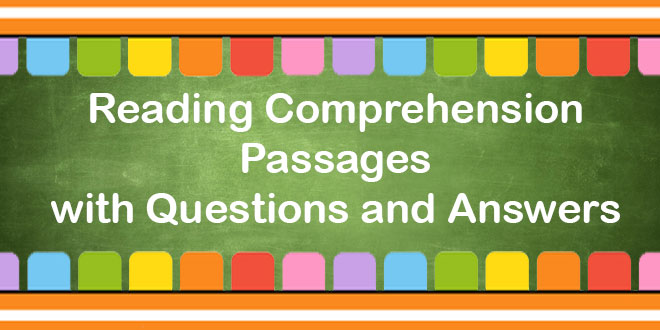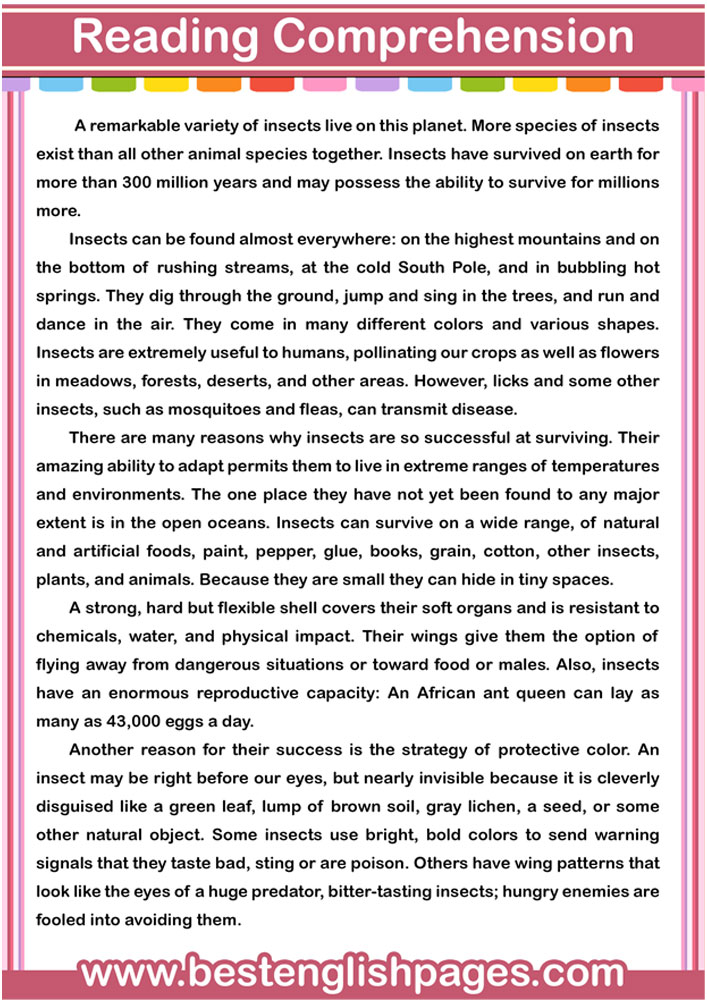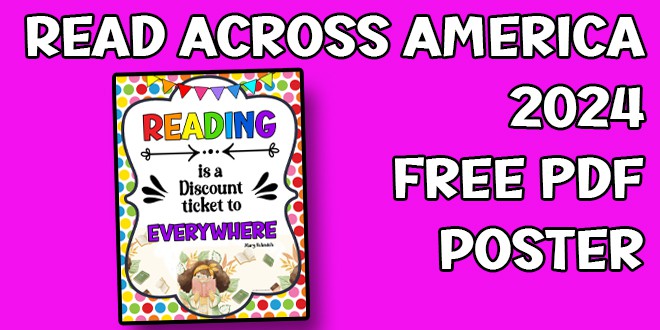Are you looking for reading comprehension passages with questions and answers pdf? or English comprehension passages with questions and answers free download? or reading passages pdf? or simply because you are asking these questions: Where can I get free ESL reading comprehension pdf? or printable reading comprehensions? Reading Comprehension Passages with Questions and Answers? if so, then you have come to the right place.
In general, reading comprehension skills give English language learners the opportunity to acquire new knowledge, through visual perception, discrimination, logical analysis, and recognition.
This article compiles some free ESL Printable reading comprehension worksheets pdf that will surely aid strengthen and sharpen the learners’ reading comprehension strategies. These comprehension worksheets will help boost students’ basic reading comprehension skills such as activating prior knowledge and expanding vocabulary knowledge as well.

Reading Comprehension Passages with Questions and Answers Pdf
Printable Reading Comprehension Worksheet
A remarkable variety of insects live on this planet. More species of insects exist than all other animal species together. Insects have survived on earth for more than 300 million years and may possess the ability to survive for millions more.
Insects can be found almost everywhere: on the highest mountains and on the bottom of rushing streams, at the cold South Pole, and in bubbling hot springs. They dig through the ground, jump and sing in the trees, and run and dance in the air. They come in many different colors and various shapes. Insects are extremely useful to humans, pollinating our crops as well as flowers in meadows, forests, deserts, and other areas. However, licks and some other insects, such as mosquitoes and fleas, can transmit disease.
There are many reasons why insects are so successful at surviving. Their amazing ability to adapt permits them to live in extreme ranges of temperatures and environments. The one place they have not yet been found to any major extent is in the open oceans. Insects can survive on a wide range, of natural and artificial foods, paint, pepper, glue, books, grain, cotton, other insects, plants, and animals. Because they are small they can hide in tiny spaces.
A strong, hard but flexible shell covers their soft organs and is resistant to chemicals, water, and physical impact. Their wings give them the option of flying away from dangerous situations or toward food or males. Also, insects have an enormous reproductive capacity: An African ant queen can lay as many as 43,000 eggs a day.
Another reason for their success is the strategy of protective color. An insect may be right before our eyes, but nearly invisible because it is cleverly disguised like a green leaf, lump of brown soil, gray lichen, a seed, or some other natural object. Some insects use bright, bold colors to send warning signals that they taste bad, sting or are poison. Others have wing patterns that look like the eyes of a huge predator, bitter-tasting insects; hungry enemies are fooled into avoiding them.
Read the passage then answer the questions:
Choose correct answers to the question:
- Insects can be found in large amounts in the following places EXCEPT _.
- A. on the mountains with little air
- B. in the cold polar areas
- C. in the hot desert areas
- D. in the open oceans
2. Insects protect themselves from chemicals by _
- A. hiding in tiny spaces
- B. having a strong shell
- C. flying away when necessary
- D. changing colors or shapes
3. Some insects disguise themselves like natural objects so as to __
- A. frighten away their enemies
- B. avoid being discovered
- C. send warning signals
- D. look bitter-tasting
4. The passage mentions that insects __.
- A. can be found in any extreme environments
- B. have survived longer than any other creatures
- C. can be fed on any natural or man-made foods
- D. are important for the growth of crops and flowers
5. The passage is mainly about __
- A. how insects survive in different places
- B. why insects can survive so successfully
- C. what insects can do to the environment
- D. where insects can be found in quantity



Free Reading Comprehension Worksheets Pdf
Reading Passages Pdf
A famous doctor once received a little child who was badly ill. Thanks to his skill and care, his young patient got well and was soon able to get up and run about again.
The child’s mother was very much obliged to the doctor, and she called on him to thank him for what he had done for her child.
“Doctor,” she said, “you have saved my little son. I don’t know how to thank you enough. I feel that money alone cannot repay you, so I have made this little purse with my own hands, as a sign of my gratitude. I hope you will accept it.”
The doctor stood up and said coldly, “Madam, a little present like that is very nice between friends, but a doctor needs to be paid properly for what he has done.”
The lady was so surprised and hurt so much that she could not reply for a moment. Then she said quietly, “Perhaps you will tell me how much your fee is?”
“Fifty pounds”, he answered.
The lady opened the little purse and took out four fifty-pound bank notes. She handed one of them to the doctor and put the other three back into the purse. She put the purse into her handbag and, saying goodbye to the doctor, went out of the room.
Read the passage then answer the questions:
- 1. The lady was thankful to the doctor because
- A. he had saved her life
- B. he had saved her son’s life
- C. he had lent her some money
- D. he often called on her
- 2. The doctor refused the lady’s purse because he thought
- A. the purse should be given between friends
- B. the purse was too small
- C. the lady was not kind to him
- D. the lady just gave him that purse and wouldn’t give him the medical fee
- 3. What the doctor said to the lady.
- A. worried
- B. interested
- C. frightened
- D. hurt
- 4. The money in the purse
- A. was only 150 pounds
- B. was less than 200 pounds
- C. was much more than the medical fee
- D. was not enough for the medical fee
- 5. How do you think the doctor would feel in the end?
- A. Sorry and worried
- B. Regret and proud
- C. Excited and proud
- D. Sorry and regret
ESL Comprehension Worksheets:
Comprehension Passage with Questions and Answers
When Mr. David retired, he bought a small house in a village near the sea. He liked it and hoped to live a quiet life in it. But to his surprise, many visitors came to see his house in the summer holidays, for it was the most interesting building in the village.
From morning to night, there were visitors outside the house. They kept looking into the rooms through the windows and many of them even went into the house. He decided to drive the visitors away. So he put a notice on the window. The notice said, “If you want to satisfy your curiosity, come in and look around. Price: twenty dollars.”
Mr. David was sure that the visitors would stop coming, but he was wrong. More and more visitors came and Mr. David had to spend every day showing them around his house. “I came here to retire, not to work as a guide”, he said angrily.
In the end, he sold the house and moved away.
Read the passage then answer the questions:
- 1. Mr. David’s house was that many visitors came to see it.
- A. so small
- B. so quiet
- C. so interesting
- D. such frightening
- 2. Mr. David put a notice on the window_
- A. to drive the visitors away
- B. to satisfy the visitors’ curiosity
- C. to let visitors come in and look around
- D. to get some money out of the visitors
- 3. The notice made the visitors.
- A. more interested in his house
- B. lost interest in his house
- C. angry at the unfair price
- D. feel happy about the price
- 4. After Mr. David put up the notice.
- A. the visitors didn’t come anymore
- B. fewer and fewer visitors came to see his house
- C. more and more visitors came for a visit
- D. no visitor would pay money for a visit
- 5. At last he had to sell his house and move away because
- A. he did not like it at all
- B. he could not work as a guide
- C. he made enough money and wanted to buy a new expensive house
- D. he could not live a quiet life in it
Answers:
1:C 2:A 3:A 4:C 5:D
Short Passages with Comprehension Questions
Printable Comprehension Worksheets
There are fifty states in the United States. The largest in population is California; the largest in area is Alaska. Alaska is the smallest in population and Rhode Island is the smallest in size.
The oldest states are the ones along the Atlantic coast. The newest states are Alaska and Hawaii.
Alaska is also the coldest state. California and Florida are the warmest. Henry and his family live in Seattle, a big city on the Pacific coast. But Los Angeles and San Francisco, also on the Pacific coast, are larger than Seattle. Henry’s sister, Susan, lives in New York. It is the largest city in the United States. Thousands of people visit New York each year.
The most important city in the United States is Washington D. C. It is the capital, but it is much smaller than New York.
Read the passage then answer the questions:
- 1. The smallest state in area is
- A. California
- B. Alaska
- C. Rhode Island
- D. Hawaii
- 2. From the passage we learn that
- A. California is as cold as Alaska
- B. Alaska is warmer than Florida
- C. Florida is colder than California
- D. Hawaii is warmer than Alaska
- 3. According to the passage, the right description about Alaska is
- A. smallest in population, largest in area, newest and coldest
- B. largest in population, largest in area, oldest and coldest
- C. smallest in population, largest in area, oldest and warmest
- D. smallest in population, smallest in area, newest and coldest
- 4. The three cities on the Pacific coast mentioned in the passage are
- A. New York, Washington D.C. and Seattle
- B. Los Angeles, San Francisco and Seattle
- C. Los Angeles, San Francisco and New York
- D. Seattle, San Francisco and New York
- 5. From the passage we learn that
- A. Los Angeles is smaller than Seattle
- B. Washington D.C. is larger than New York
- C. Seattle is larger than San Franciso
- D. New York is larger than Los Angeles
Reading Comprehension Passages with Questions and Answers
Reading Comprehension Questions and Answers
I don’t ever want to talk about being a woman scientist again. There was a time in my life when people asked constantly for stories about what it’s like to work in a field dominated by men. I was never very good at telling those stories because truthfully I never found them interesting. What I do find interesting is the origin of the universe, the shape of space-time and the nature of black holes.
At 19, when I began studying astrophysics, it did not bother me in the least to be the only woman in the classroom. But while earning my Ph.D. at MIT and then as a post-doctor doing space research, the issue started to bother me. My every achievement—jobs, research papers, awards—was viewed through the lens of gender politics. So were my failures. Sometimes, when I was pushed into an argument on left brain versus right brain, or nature versus nurture, I would instantly fight fiercely on my behalf and all womankind.
Then one day a few years ago, out of my mouth came a sentence that would eventually become my reply to any and all provocations: I don’t talk about that anymore. It took me 10 years to get back the confidence I had at 19 and to realize that I didn’t want to deal with gender issues. Why should curing sexism be yet another terrible burden on every female scientist? After all, I don’t study sociology or political theory.
Today I research and teach at Barnard, a women’s college in New York City. Recently, someone asked me how many of the 45 students in my class were women. You cannot imagine my satisfaction at being able to answer, 45. I know some of my students worry about how they will manage their scientific research and a desire for children. And I don’t dismiss those concerns. Still, I don’t tell them “war” stories. Instead, I have given them this: the visual of their physics professor heavily pregnant doing physics experiments. And in turn they have given me the image of 45 women driven by a love of science. And that’s a sight worth talking about.
Read the passage then answer the questions:
- 1. Why doesn’t the author want to talk about being a woman scientist again?
- A) She feels unhappy working in male-dominated fields.
- B) She is fed up with the issue of gender discrimination.
- C) She is not good at telling stories of the kind.
- D) She finds space research more important.
- 2. From Paragraph 2, we can infer that people would attribute the author’s failures to
- A) the very fact that she is a woman
- B) her involvement in gender politics
- C) her over-confidence as a female astrophysicist
- D) the burden she bears in a male-dominated society
- 3. What did the author constantly fight against while doing her Ph.D. and post-doctoral research?
- A) Lack of confidence in succeeding in space science.
- B) Unfair accusations from both inside and outside her circle.
- C) People’s stereotyped attitudes toward female scientists.
- D) Widespread misconceptions about nature and nurture.
- 4. Why does the author feel great satisfaction when talking about her class?
- A) Female students no longer have to bother about gender issues.
- B) Her students’ performance has brought back her confidence.
- C) Her female students can do just as well as male students.
- D) More female students are pursuing science than before.
- 5. What does the image the author presents to her students suggest?
- A) Women students needn’t have the concerns of her generation.
- B) Women have more barriers on their way to academic success.
- C) Women can balance a career in science and having a family.
- D) Women now have fewer problems pursuing a science career.
Answers:
1:D 2:A 3: C 4: D 5: C
Short Reading Passage with Questions and Answers
Comprehension Worksheets
The future population will be older than today, and this in turn will change the patterns of social demands. However, Mexico will still be far from the “aging societies” that will most likely prevail in industrialized countries. In less than 25 years, the country will have to add almost as much infrastructure as it has already built up to now, simply to maintain services and production at the current levels.
This will be a tremendous challenge, although a similar one was faced successfully in the recent past when available infrastructure was doubled in two decades or so. It is no wonder that much has been said about the need to reduce or preferably halt Mexico’s population control which is taken for granted as both good and necessary. It has also gained supporters in the developing world, and Mexico is no exception. But the arguments about population are complicated, as the following discussion illustrates.
Even if Mexico’s population reaches 125 million by the year 2010, its population density is still smaller than the 1985 population density of some 50 countries. By international standards, Mexico will still not be overpopulated by the year 2010. If wealth is generated by people, the more individuals there are, the greater the wealth that potentially could be generated. Why should Mexico control its population at density levels below those of the richer countries if more population represents the possibility of generating more wealth?
On the other hand, it is often pointed out that once sustainability limits are near or are reached, there are decreasing productivity gains or, perhaps more accurately, increasing productive losses and people become a cost rather than an asset. If we assume that there are sustainability limits and that we are close to reaching these limits at a world level, then it is appropriate to check population growth.
Read the passage then answer the questions:
- 1. According to the passage, the population argument is focused on_______.
- A. whether more people are a property or a cost
- B. whether Mexico should control its population growth or not
- C. whether the density of the population in Mexico is large or small
- D. what the standard international sustainability limit is
- 2. Which of the following is TRUE according to the first paragraph?
- A. Mexico has stepped into an aging society.
- B. It is not necessary for Mexico to control its population.
- C. Mexico’s population is younger than that of developed countries.
- D. It is not necessary for Mexico to develop its infrastructure.
- 3. By “infrastructure”(Para. 2) the author means_______.
- A. buildings
- B. the basic framework of a country, such as schools, services, etc.
- C. social demands
- D. services and production
- 4. It may be inferred from the 3rd paragraph that_______.
- A. it isn’t necessary for Mexico to control its population growth
- B. population is likely to grow at a slower pace than in the past
- C. the more people there are, the greater the wealth people could generate
- D. Mexico should control its population growth because it belongs to the developing countries
- 5. To check population growth is necessary when_______.
- A. there are decreasing productivity gains
- B. there are increasing productivity losses
- C. we are close to reaching the sustainability limits at a world level
- D. people become a cost
Answers:
1. B 2. C 3. B 4. A 5. C




Leave a Reply